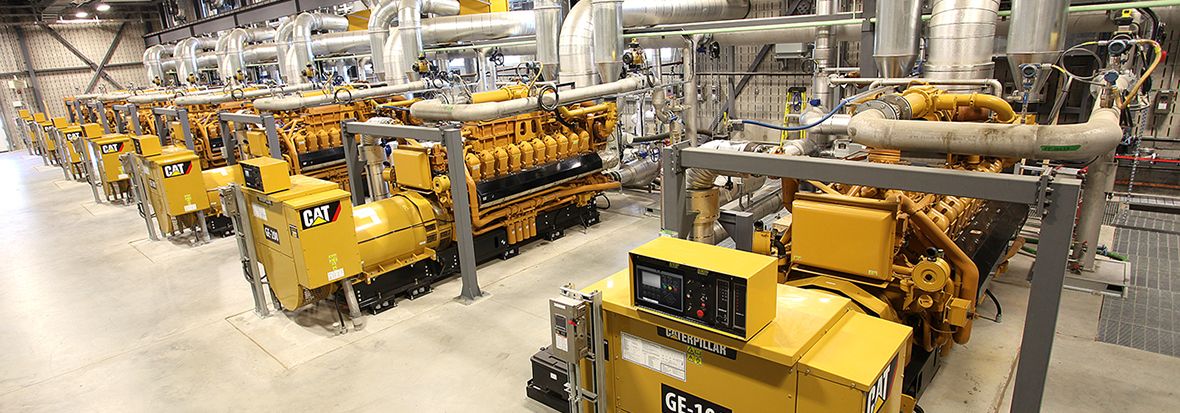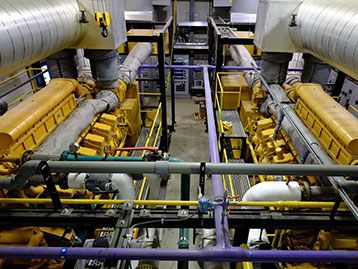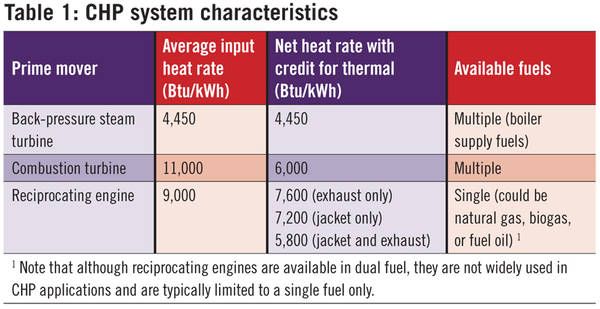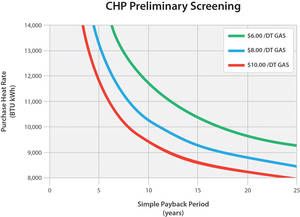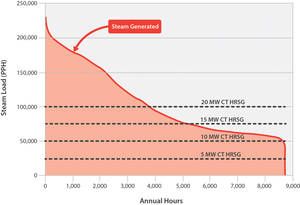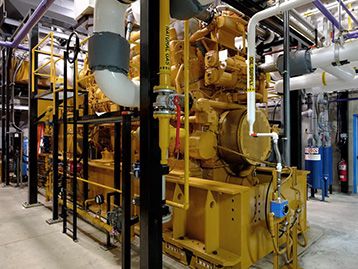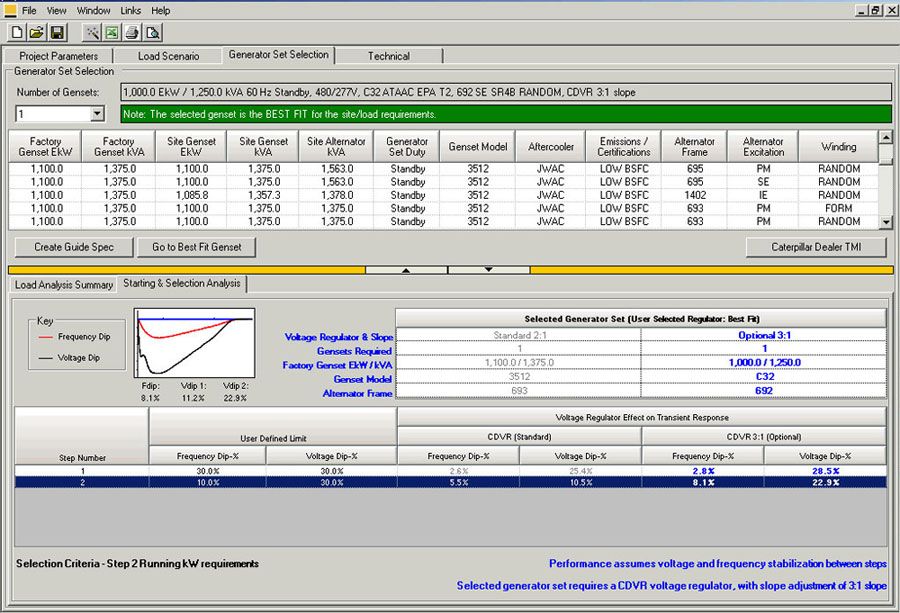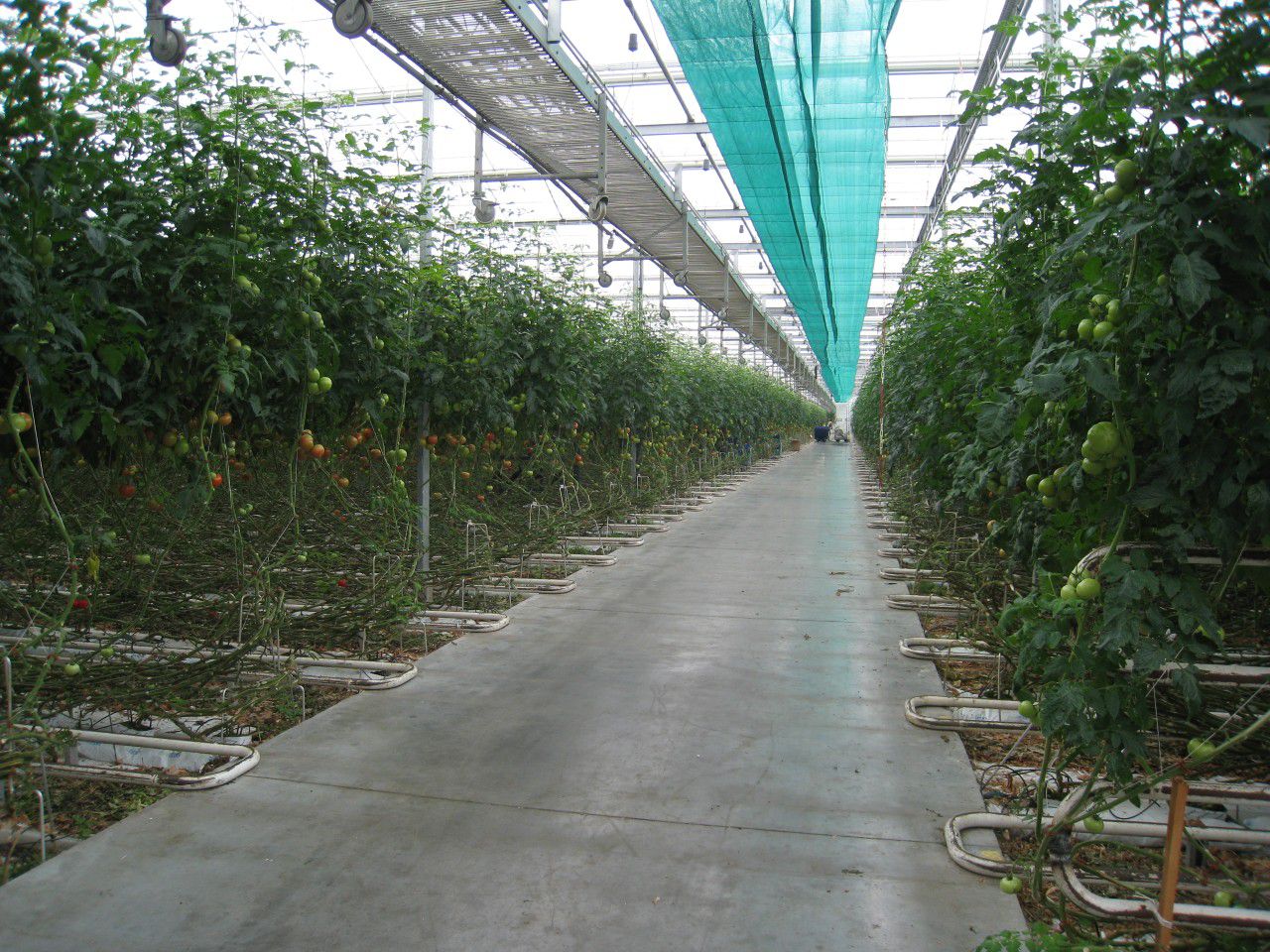CHP uses various fuel sources to simultaneously generate electricity and thermal energy, recovering heat that is otherwise exhausted from the power generation process. By capturing and using waste heat effectively, CHP uses less fuel than separate heat and power systems to produce the same amount of energy. Because CHP systems are located at or near points of use, transmission and distribution losses that would otherwise occur between a power plant and the user are essentially eliminated. As a form of distributed generation, CHP can provide high-quality electricity and thermal energy to a location regardless of power grid status, at the same time reducing grid congestion and deferring the need for new central generating plants.
Increasing interest in CHP is being driven by global energy demand, price volatility, and climate change concerns. Compared to the 45% efficiency typical of traditional separate production of heat and power, CHP systems can operate at efficiency levels exceeding 70%. Current CHP generating capacity in the U.S. is approximately 85 GW, or 9% of the U.S. total. This existing CHP capacity avoids 1.9 quads of fuel consumption (equivalent to 68.4 million tons of coal) and 248 million metric tons of carbon dioxide (CO2) emissions (equivalent to 45 million automobiles) per year. A recent U.S. Dept. of Energy report prepared by Oak Ridge National Laboratory, Oak Ridge, Tenn., estimated that raising CHP capacity to 20% of the total U.S. electrical production capacity required by 2030, or 241 GW, would avoid 5.3 quads and 848 million metric tons of CO2 (equivalent to 154 million automobiles). Government regulations encouraging CHP applications in Denmark, Finland, and the Netherlands have resulted in percentage capacities greatly exceeding this level in those countries. Recognizing the importance of CHP on a national scale, President Obama signed an executive order in 2012 establishing a national goal of adding 40 GW of new combined heat and power capacity by 2020.
CHP system types
CHP system types are identified by the prime-mover technology, which is configured with a generator, heat recovery, and electrical interconnections. These system types include back-pressure steam turbines, gas turbines, and reciprocating engines.
Back-pressure steam turbines: Back-pressure steam turbines have a variety of designs and can be matched with multifuel boilers, industrial waste heat, and gas turbine waste heat. This is a typical application: Steam is generated at a higher pressure than necessary for the loads/process and can be run though a back-pressure turbine to generate electricity in an extremely cost-effective manner.
Gas turbines: Gas turbines (otherwise known as combustion turbines, or CTs), derived from jet aircraft technology, provide more than 60% of U.S. CHP capacity. Gas turbines create high-temperature exhaust heat that is well-suited to high-pressure steam production required by process industries.
Reciprocating engines: Reciprocating engines represent less than 5% of U.S. CHP capacity, but total more than half of the CHP systems in place. A low-cost technology that has remained current through efficiency and emissions improvement, reciprocating engines produce exhaust heat ideal for hot water production and generally have a higher electrical energy-to-thermal energy output than a standard CT.
CHP characteristics: CTs, reciprocating engines
Heat recovery associated with a combustion-turbine CHP consists of a heat recovery steam generator (HRSG) downstream of the CT, which reduces the flue gas temperature from approximately 1,000 F to 350. An economizer can be located downstream of the HRSG to increase heat recovery and reduce the flue gas temperatures to approximately 250 F for noncondensing, and even lower for condensing economizers. The HRSG can produce a variety of steam pressures and temperatures, and can also produce water for heating. A duct burner can be installed between the CT and the HRSG to increase heat output for recovery by up to a factor of approximately 4, as necessary. The efficiency of a duct burner is approximately 90% based on using HHV fuel, because all of the required combustion air is provided by the CT exhaust at an elevated temperature.
The heat recovery from a reciprocating-engine CHP system comes from two separate systems. The heat recovery from the engine exhaust is similar to the heat recovery associated with a CT application. This source recovers approximately 15% of the heat input for an engine CHP application. A second source of heat recovery from a reciprocating engine is the jacket water, similar to an automobile radiator. This source produces approximately 20% of recoverable heat. Some engines also have a smaller component of heat recovery available from air coolers or oil coolers. This engine waste heat is mainly in the form of heating water due to the lower temperatures associated with it. The range of net heat rates vary depending on whether the jacket-water heat is recovered as well as the engine-exhaust heat.
Preliminary CHP application screening
When considering a CHP system, a quick initial method to determine if CHP is feasible is to calculate the purchased heat rate of the present utility electrical supply. The examples and values noted in this article assume that all recoverable thermal energy and electricity produced by the CHP system can be used to replace energy that would otherwise be generated through a boiler system using natural gas or purchased electricity. The purchased heat rate is sometimes known as the “spark spread.”
The purchased heat rate is obtained by dividing the cost of electricity (dollars/kWh) by the cost of natural gas (dollars/Dth). Assume the cost of electricity is 8 cents/kWh and natural gas cost is $8/Dth. The purchased heat rate is as follows:
Purchased heat rate = (($0.08) / ($8.00)) x 1,000,000 = 10,000 Btus/kWh
The general heat rate of a CHP process using a CT or engine is approximately 6,000 Btus/kWh. As the purchased heat rate increases, the cost-effectiveness of CHP increases.
In addition to fuel, there are other annual recurring costs associated with CHP. A very general rule-of-thumb for a preliminary screening model is 1.2 cents/kWh produced as an additional operation and maintenance cost (based on 2015 U.S. Environmental Protection Agency Catalog of CHP Technologies), although this can vary based on the prime mover selected. Combustion turbines and low-speed reciprocating engines should be approximately the same cost, while high-speed reciprocating engines (more than 1,000 rpm) tend to have higher maintenance costs. Additionally, the CHP system does not operate at full load 24/7 (i.e., 8,760 hr/yr), periods of downtime are necessary for maintenance. A reasonable availability for a CHP system is generally around 95%.
A simple amortization period can be determined from the purchased heat rate (see Figure 1). This very simple assessment considers only utility pricing on a general basis, and it is intended to indicate general estimates of payback as a first hurdle. Variables such as the exact structure of the electrical rate charges, seasonal variations in natural gas pricing, ability to fully use all power and waste heat generated, overall system capital costs, and CHP system performance can greatly impact the actual economics.
Using the previous example of 8 cents/kWh and $8/Dth, the purchased heat rate is 10,000 Btus/hour. Entering the figure at 10,000 Btus/kWh and $8/Dth, the simple amortization period of approximately 11 years can be determined. Higher-price gas curves showing improved payback may seem unusual. However, note that the natural gas price is also included in the heat rate, or spark spread value, on the Y axis of the graph in Figure 1. The CHP preliminary screening graph is based on an initial cost of $2,000/kW, which can vary widely based on the extent of work necessary to integrate the CHP into the existing systems.
Detailed economic evaluation
If the purchased heat rate supports a reasonable payback, a detailed CHP analysis should be performed. The detailed analysis must address all costs accurately, and closely simulate the operation of the process.
The initial step in this process is to determine the electrical and thermal requirements of the facility. This data collection and analysis is typically in an hourly format, sometimes called an “8,760 analysis.” From that data, electrical and thermal load duration curves are developed to assist in a graphical representation of the appropriate sizing for a CHP system that can use all the electrical and thermal energy produced (see Figure 2).
The air emission limits of the specific site also must be determined. Typically, nitrogen oxide and carbon monoxide are the two criteria pollutants that will determine if supplemental pollution control technology is required, based on the allowable emission limits for that site.
The type and capacity of the prime mover must be analyzed in detail. The system analysis must include multiple factors. Some typically overlooked inputs include:
Equipment heat rate: Manufacturers of CHP prime movers list the equipment heat rate as the lower heating value (LHV) of the fuel. Fossil fuels are purchased based on HHV. The LHV heat rate can be converted to the HHV heat rate by multiplying the LHV heat rate by 1.10. CT and engine manufacturers typically state they use LHV to reflect the true efficiency of the engine without having to consider water vapor losses in the exhaust stream.
Parasitic loads: All secondary support equipment must be included in the analysis. Typically, a gas compressor or booster will be the major parasitic load for a CT, but there are additional smaller loads associated with both CT and reciprocating engine systems.
Installation conditions: Factors that may significantly impact prime-mover CHP system output and efficiency include:
- Inlet air conditions
- Installation elevation
- Inlet air pressure drop
- Outlet/exhaust pressure drop.
Electrical standby charges: Most electric utility companies require a standby cost to provide additional electric service if and when the CHP plant is not operating.
Air-pollution control: Depending on the geographical location and size of the CHP, additional air-pollution equipment may be required. This control equipment will increase initial and annual operating costs.
The final system analysis should be based on present-value lifecycle costs. An important factor in the lifecycle costs is annual fuel escalation. The DOE Energy Information Agency publishes data that can be used in establishing appropriate fuel escalation rates. A sensitivity analysis of all inputs to the system model also should be developed to determine possible effects to CHP feasibility based on these various factors.
Because a CHP process generates useful heat, avoiding the capital costs of installing boilers can be applicable and included in the system analysis. If the CHP is required to provide essential heating, the system may be required to be dual fuel. Generally, dual fuel will cause the CHP system to be combustion-turbine-based because reciprocating engines must be designed for single fuel only. Although reciprocating engines can operate on a variety of fuels, it is most common in a CHP application that they are designed for one specific fuel and cannot switch between fuels like a combustion turbine can.
Improvements in CHP system technologies, and in the cost-effectiveness of CHP applications, have outpaced regulatory updates and the modernization of practical considerations to better allow widespread deployment. The absence of national business practice standards for interconnection of distributed generation technologies with the electric utility grid perpetuates a patchwork of regulatory models. And present input-based emissions regulations that measure emissions as pounds of pollutant per Btu of input fuel fail to account for the CHP thermal output, as with regulating pounds of pollutant per megawatt hour. As such obstacles are overcome, CHP can fulfill greater potential as a pathway to more efficient, more resilient, more flexible, and greener energy production.
About the authors
Jerry Schuett is a principal and leader of the energy and utilities market at Affiliated Engineers Inc. with more than 35 years of experience designing and managing energy and utility projects.
David Cunningham is a project manager at Affiliated Engineers Inc. with more than 15 years of experience designing major utility projects—including heat and power—across the country.



